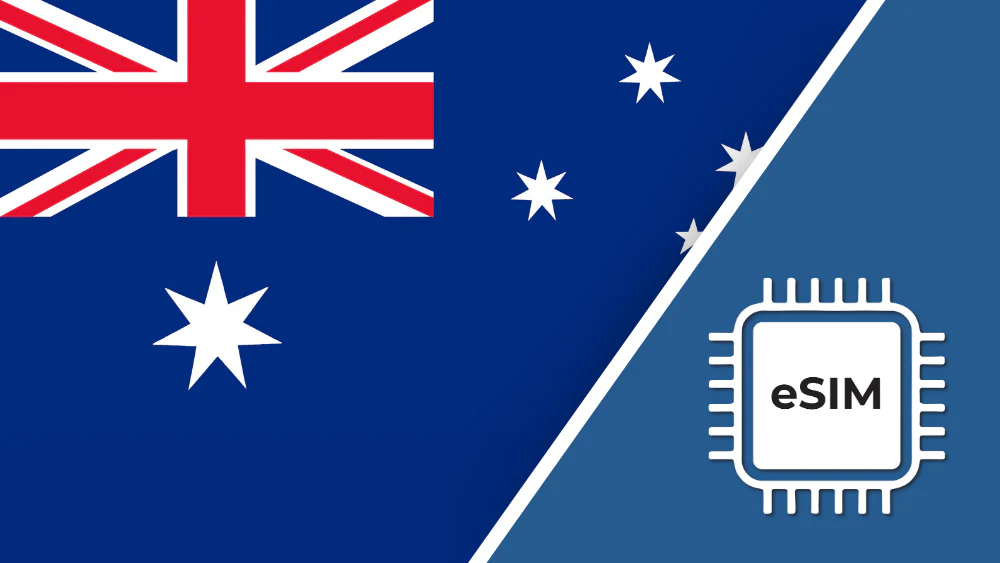Introduction
The rise of digital technology has brought a revolutionary change to mobile connectivity—eSIM in Australia is now one of the most talked-about topics in the telecom space. As physical SIM cards gradually become obsolete, embedded SIMs (eSIMs) are taking center stage, offering convenience, flexibility, and a seamless digital experience. Whether you’re a traveler, a tech enthusiast, or simply someone curious about upgrading your device, understanding how eSIM works in Australia is crucial.
Australia is quickly adapting to this digital SIM trend, with most major telecom providers now supporting eSIM technology across smartphones, smartwatches, tablets, and even laptops. In this article, we’ll walk you through what eSIM is, how it works in Australia, which carriers support it, how to activate it, and the key advantages and considerations. This comprehensive guide is designed to answer all your questions and help you get the most out of using eSIM in Australia.
What is an eSIM?
An eSIM, short for Embedded Subscriber Identity Module, is a digital version of the traditional physical SIM card. Unlike the small plastic SIM cards that need to be inserted into your phone, an eSIM is built directly into the device’s hardware. Once installed, it can be programmed with various carrier profiles without swapping SIM cards.
This technology is particularly useful for those who frequently switch carriers, travel internationally, or manage multiple phone numbers on one device. With eSIM in Australia, users can access different plans from various providers all through software updates or QR codes—no more fumbling with tools or waiting for a new SIM to arrive.
Adoption of eSIM in Australia
Australia has been relatively quick to embrace eSIM technology compared to other regions. Most modern smartphones, including recent models from Apple, Samsung, and Google, come eSIM-ready. As a result, Australian carriers have adapted their infrastructure to support the growing demand for digital SIMs.
In major cities like Sydney, Melbourne, Brisbane, and Perth, users can easily activate and manage their eSIM through mobile apps or customer support. Even regional areas are seeing increased support, making eSIM in Australia more accessible than ever.
Supported Devices for eSIM in Australia
If you’re planning to switch to eSIM, make sure your device supports it. Some of the popular devices that support eSIM in Australia include:
-
iPhone models from XS and newer
-
Google Pixel 3 and later
-
Samsung Galaxy S20 and later
-
iPads with cellular capabilities
-
Apple Watch Series 3 and newer (Cellular)
-
Windows laptops with LTE capability
These devices allow users to activate a digital SIM profile without inserting a physical card, making the process entirely software-based.
Major Carriers Offering eSIM in Australia
Several Australian telecom providers offer full eSIM support for both prepaid and postpaid plans. The leading carriers providing eSIM in Australia include:
-
Telstra – Offers both consumer and business eSIM plans, with nationwide coverage.
-
Optus – Provides eSIM options for phones and smartwatches, with excellent urban coverage.
-
Vodafone Australia – Supports eSIM for various devices, including multi-device plans.
In addition to the big three, several Mobile Virtual Network Operators (MVNOs) have also begun supporting eSIM, adding more competitive choices for users.
How to Activate eSIM in Australia
Activating eSIM in Australia is relatively simple. Here’s a general step-by-step guide most carriers follow:
-
Check compatibility: Ensure your device supports eSIM.
-
Contact carrier: Choose your preferred eSIM-compatible carrier and request activation.
-
Receive QR code: The carrier will send a QR code via email or in-store.
-
Scan and activate: Go to your device’s cellular settings, scan the QR code, and the eSIM profile will be downloaded.
-
Set default line: You can set the eSIM as your primary line or use it as a secondary number.
Many modern phones allow dual SIM usage with a physical SIM and an eSIM simultaneously, offering flexibility for work and personal use.
Benefits of Using eSIM in Australia
Switching to eSIM in Australia comes with a host of advantages:
1. Instant Activation
eSIM allows instant connectivity. No waiting for physical delivery—activation can be done in minutes.
2. Dual SIM Functionality
Most eSIM-supported phones allow users to keep both a physical SIM and a digital SIM active, making it easier to manage work and personal numbers.
3. International Roaming
eSIMs are perfect for travelers. You can install an international eSIM before arriving at your destination and avoid high roaming charges.
4. Environmental Friendly
Going digital means less plastic waste, contributing positively to environmental sustainability.
5. Space Saving
Without the need for a SIM tray, manufacturers can use the extra space in devices for more features or larger batteries.
Drawbacks and Considerations
While eSIM has numerous advantages, it’s not without a few drawbacks:
-
Device limitations: Not all older phones support eSIM.
-
Carrier restrictions: Some smaller carriers may still lack full eSIM support.
-
Troubleshooting: In rare cases, troubleshooting a malfunctioning eSIM can be more technical than simply swapping a physical card.
-
No easy swaps: You can’t just pop your SIM into another device—you must re-download or reassign your eSIM profile.
Despite these concerns, the overall experience of using eSIM in Australia is highly efficient and future-forward.
Use of eSIM for Travelers in Australia
Australia sees millions of tourists every year, and eSIM is particularly useful for them. Many international travelers prefer using eSIM for instant access to local mobile networks without visiting a store. Prepaid eSIMs for Australia are widely available through carrier services and allow instant activation, making it ideal for short stays.
Additionally, Australians traveling overseas can switch to international data plans via eSIM without removing their local number, ensuring they remain connected without exorbitant fees.
eSIM and Wearables in Australia
Smartwatches like the Apple Watch and Samsung Galaxy Watch also benefit from eSIM technology. Carriers in Australia offer companion eSIM plans that allow wearables to operate independently from smartphones. This means users can leave their phones at home while still receiving calls, messages, and data directly on their watches.
This trend is growing rapidly, with fitness enthusiasts, professionals, and travelers alike embracing the convenience offered by wearable eSIM support.
Future of eSIM in Australia
The shift toward eSIM is not just a trend—it’s the future. As more manufacturers eliminate physical SIM trays in favor of embedded digital solutions, Australia’s telecom ecosystem is expected to evolve accordingly. Industry experts predict that over 80% of mobile users in Australia could be using eSIM within the next five years.
Government regulations and telecommunication authorities are also adapting policies to enhance support and security for eSIM activation. From smart cities to IoT devices, the role of eSIM in Australia is set to expand beyond just smartphones.

Frequently Asked Questions (FAQs)
What is eSIM in Australia?
eSIM in Australia refers to the use of embedded digital SIMs offered by Australian telecom providers, allowing users to activate mobile services without a physical SIM card.
Which carriers support eSIM in Australia?
Telstra, Optus, and Vodafone are the major carriers offering eSIM in Australia, along with several MVNOs.
Can I use eSIM on my iPhone in Australia?
Yes, if you have an iPhone XS or newer, it supports eSIM. All major Australian carriers support eSIM on iPhones.
Is eSIM available for prepaid plans in Australia?
Yes, many carriers now offer eSIM for both prepaid and postpaid plans across various devices.
Can I use eSIM and a physical SIM together?
Absolutely. Most eSIM-compatible smartphones allow dual SIM functionality—one physical SIM and one eSIM.
Is eSIM in Australia safe and secure?
Yes, eSIMs offer high security. In fact, they are more difficult to clone or steal compared to physical SIMs.
How do I activate eSIM in Australia?
You need to contact your carrier, receive a QR code, scan it in your phone’s settings, and complete the activation process.
What devices support eSIM in Australia?
Popular devices include recent iPhones, Google Pixel phones, Samsung Galaxy phones, Apple Watches, iPads, and some laptops.
Are international eSIMs compatible in Australia?
Yes, international travelers can use compatible global eSIMs to access local networks in Australia easily.
Will physical SIM cards be replaced entirely in Australia?
While physical SIMs are still in use, the industry is clearly moving toward an eSIM-only future for better efficiency and user experience.
Conclusion
eSIM in Australia is transforming the way people connect. From faster activation and dual SIM usage to better travel experiences and eco-friendly benefits, eSIMs provide a modern, flexible alternative to traditional SIM cards. With support from major telecom providers and compatibility with the latest devices, Australians are increasingly embracing this digital advancement.
As the mobile landscape continues to evolve, eSIM in Australia stands at the forefront of this change—delivering not just convenience but also a glimpse into the future of global connectivity.




